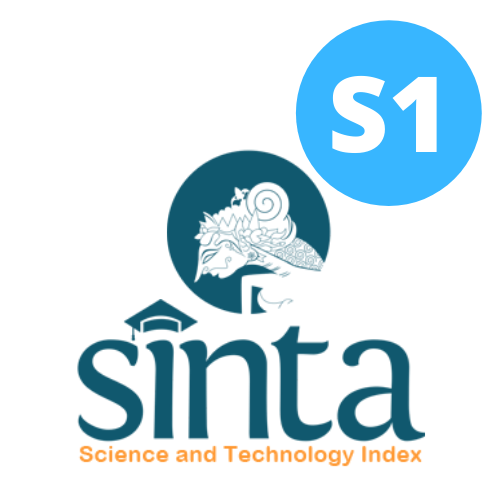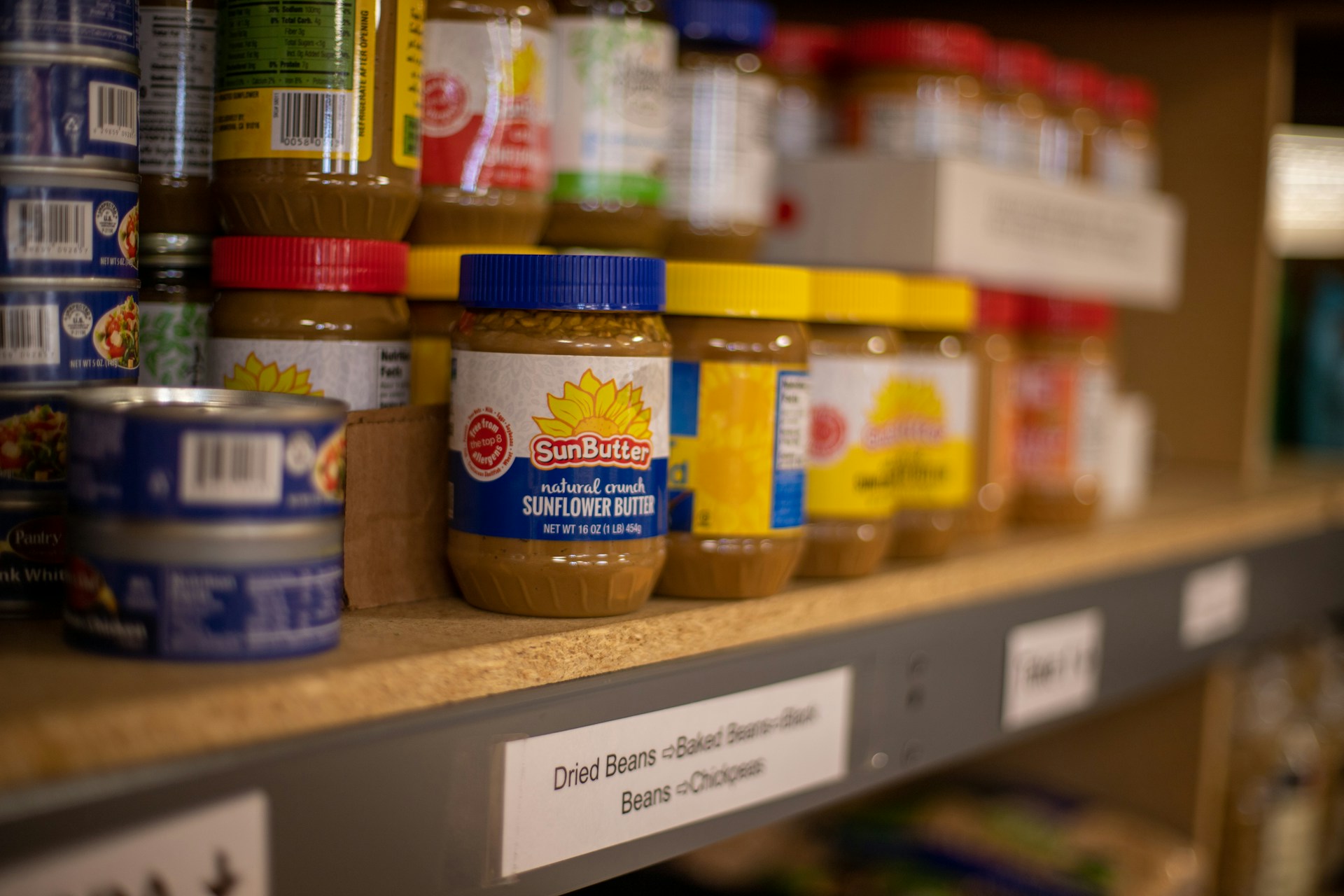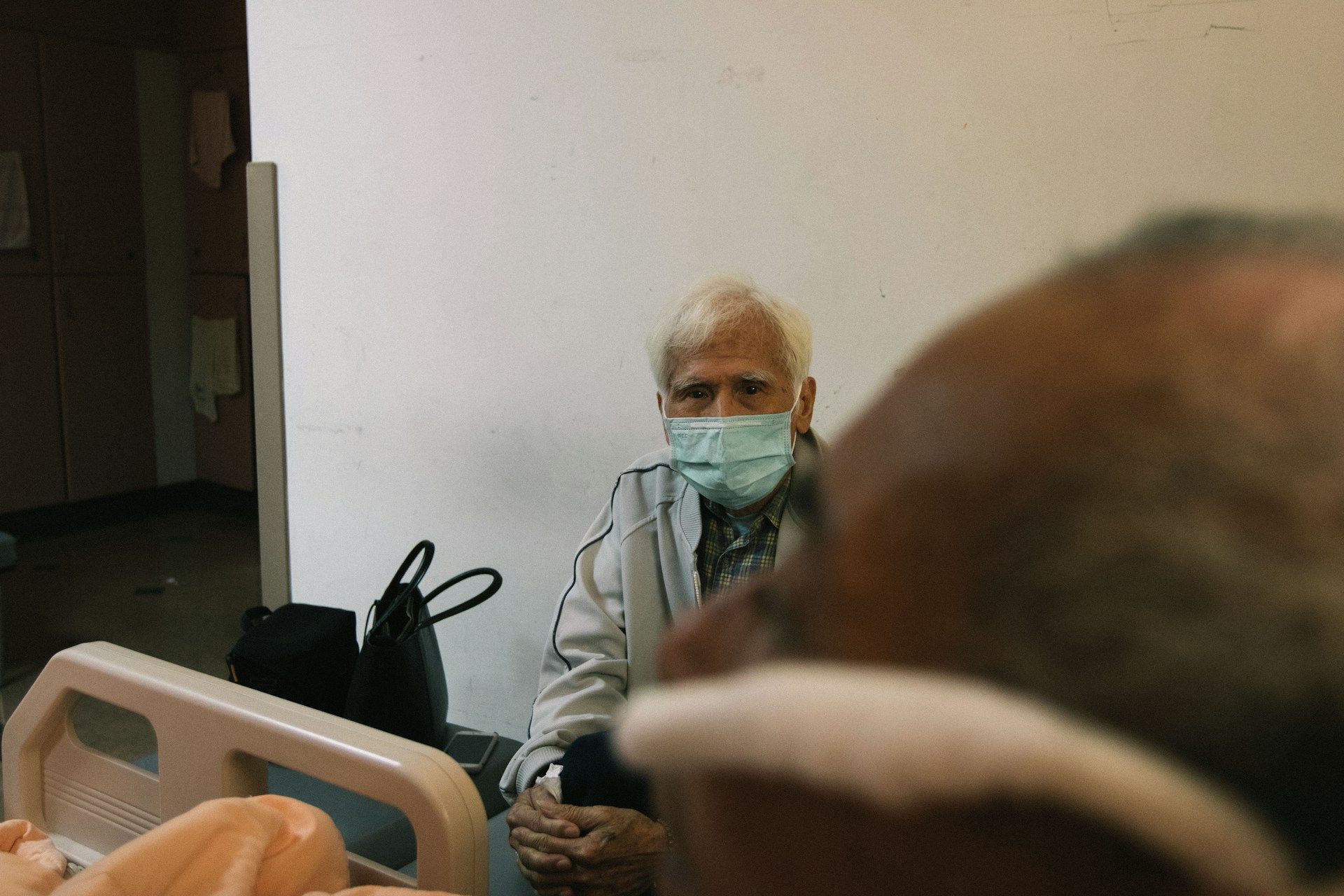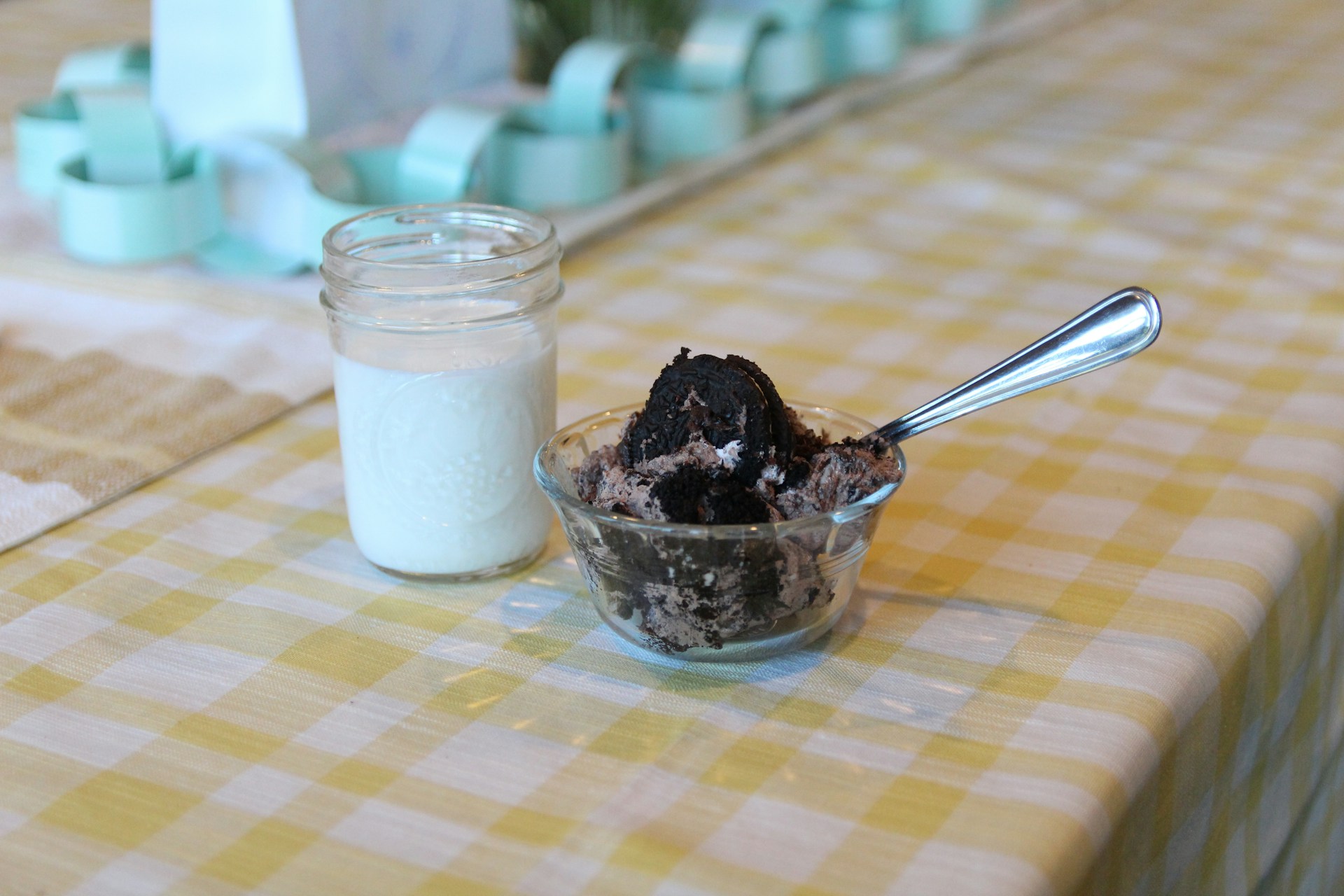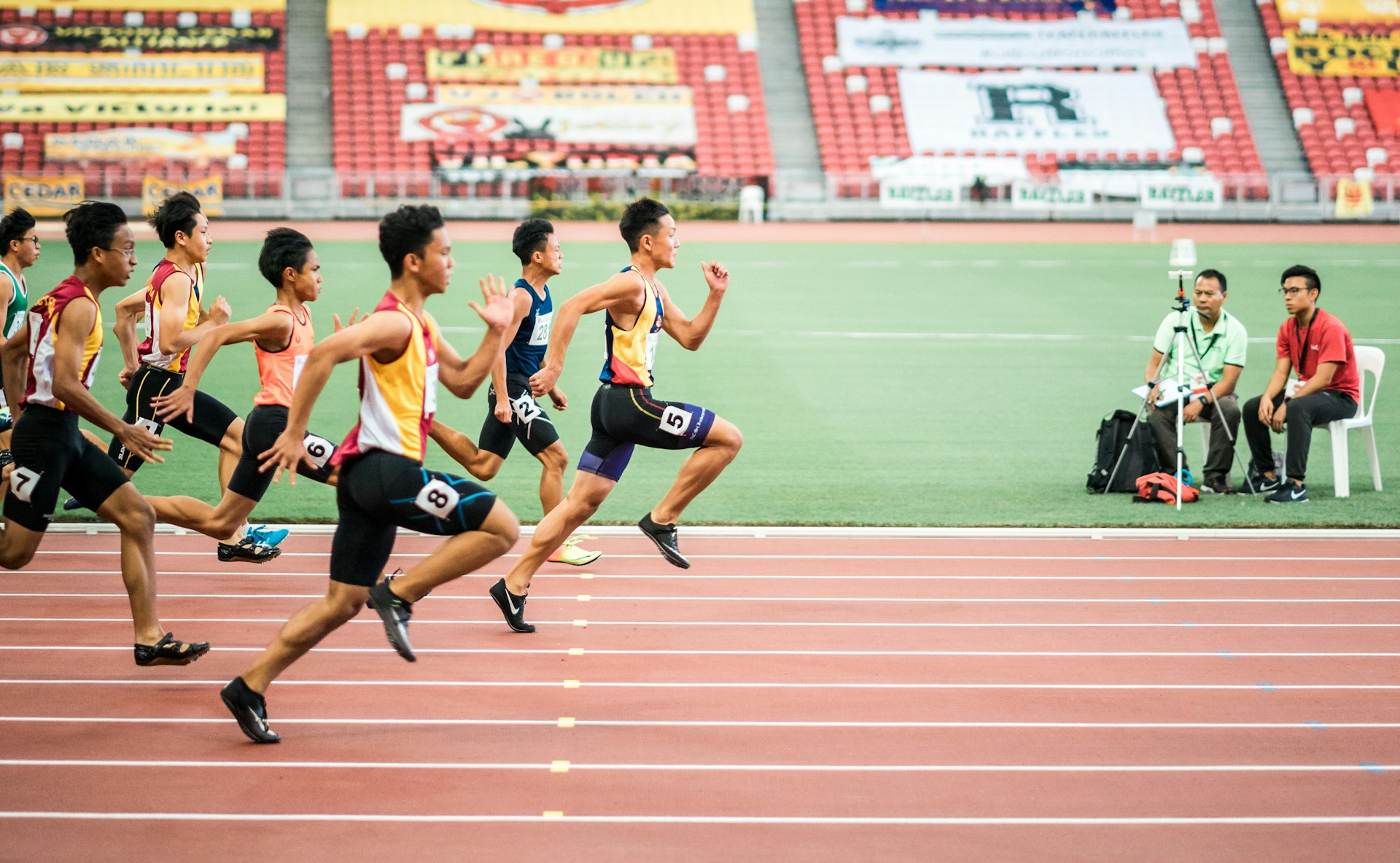The Relationship Between Iron Intake, Vitamin C, and Body Fat Percentage with the Incidence of Anemia in Adolescent Girls at Askhabul Kahfi Islamic Boarding School Semarang City
Hubungan Asupan Zat Besi, Vitamin C, dan Persen Lemak Tubuh dengan Kejadian Anemia pada Remaja Putri di Pondok Pesantren Askhabul Kahfi Kota Semarang

Downloads
Background: Anemia is a medical condition that arises from a deficiency of certain nutrients and is commonly observed in both developed and developing countries. Deficiencies in essential nutrients, such as iron, folic acid, protein, and vitamin C, are frequent causes of anemia in adolescents. Additionally, other factors, including body fat percentage, may also contribute to the condition.
Objectives: To analyze the relationship between iron intake, vitamin C intake, and body fat percentage among adolescent girls at Askhabul Kahfi Islamic Boarding School in Semarang City.
Methods: This cross-sectional study involved 65 adolescent girls selected using proportionate stratified sampling. Iron and vitamin C intake data were collected through interviews using the SQ-FFQ. Body fat percentage was measured using the Omron HBF-212 BIA device, and anemia was diagnosed based on hemoglobin levels using the EasyTouch GCHb device. Bivariate analysis was conducted with the Gamma correlation test, and multivariate analysis used ordinal logistic regression.
Results: Among the respondents, 33 (50.8%) had adequate iron intake, 35 (53.2%) had adequate vitamin C intake, 43 (66.2%) had normal body fat percentages, and 42 (64.6%) were not anemia. A significant relationship was found between iron intake (p-value = 0.010) and body fat percentage (p-value = 0.009) with anemia incidence. No significant relationship was found between vitamin C intake (p-value = 0.095) and anemia.
Conclusions: Iron intake and body fat percentage are significantly relationship with anemia in adolescent girls, with iron intake being the most influential factor.
Mahan, L. K. & Raymond, J. L. Krause’s: Food & The Nutrition Care Process. (Elvisier, 2017).
Briawan, D. Anemia: Masalah Gizi pada Remaja Wanita. (Penerbit Buku Kedokteran EGC, 2018).
World Health Organizaton. Haemoglobin Concentrations for the Diagnosis of Anaemia and Assessment of Severity. Geneva, Switzerland: World Health Organization (World Health Organization (WHO), 2011). https://iris.who.int/handle/10665/85839
Kemenkes. Laporan Nasional Riset Kesehatan Dasar. (Kementerian Kesehatan RI, 2018).
Dinas Kesehatan Provinsi Jawa Tengah. Capaian Program USEKREM (Pelayanan Kesehatan Usia Sekolah dan Remaja). (DISKESPROV JATENG, 2024).
Astuti & Kulsum, U. Pola Menstruasi dengan Terjadinya Anemia pada Remaja Putri. J. Ilmu Keperawatan dan Kebidanan 11, 314–327 (2020). https://doi.org/10.26751/jikk.v11i2.832
Utama, F., Rahmiwati, A. & Arinda, D. F. Prevalence of Anemia and Its Risk Factors Among Adolescent Girls. Sriwij. Int. Conf. Public Heal. 25, 461–463 (2020). https://doi.org/10.2991/ahsr.k.200612.066
Sulistyowati, Y. & Yuniritha, E. Metabolisme Zat Gizi. (Trans Medika, 2015).
Almatsier, S. Prinsip Dasar Ilmu Gizi. (PT Gramedia Pustaka Utama, 2014).
Herlinadiyaningsih & Susilo, R. P. Hubungan Pola Menstruasi dan Tingkat Konsumsi Zat Besi dengan Kejadian Anemia pada Remaja Putri. J. Kebidanan Indones. 10, 1–11 (2019). https://doi.org/10.36419/jkebin.v10i1.239
Alfiah, S. & Dainy, C. Asupan Zat Besi, Vitamin C dan Konsumsi Tablet Tambah Darah Berhubungan dengan Kejadian Anemia Remaja Putri SMPIT Majmaul Bahrain Bogor. J. Gizi Diet. 2, 103–108 (2023). https://doi.org/10.25182/jigd.2023.2.2.103-108
Paramudita, P. U., Dwi Mahayati, N. M. & Somoyani, N. K. Hubungan Indeks Massa Tubuh dengan Status Anemia pada Remaja Putri. J. Ilm. Kebidanan (The J. Midwifery) 9, 98–102 (2021). https://doi.org/10.33992/jik.v9i1.1486
Lopez, A. C. C. et al. Sharply Higher Rates of Iron Deficiency in Obese Mexican Women and Children Are Predicted by Obesity-Related Inflammation Rather Than by Differences in Dietary Iron Intake. Am. J. Clin. Nutr. 93, 975–983 (2011). https://doi.org/10.3945/ajcn.110.005439
Sal, E. et al. Relationship Between Obesity and Iron Deficiency Anemia: Is There a Role of Hepcidin? Hematology 23, 542–548 (2018). https://doi.org/10.1080/10245332.2018.1423671
Pagani, A., Nai, A., Silvestri, L. & Camaschella, C. Hepcidin and Anemia: A Tight Relationship. Front. Physiol. 10, 1–7 (2019). https://doi.org/10.3389/fphys.2019.01294
Acharya, S., Patnaik, M., Mishra, S. & Panigrahi, A. Correlation of Hemoglobin Versus Body Mass Index and Body Fat in Young Adult Female Medical Students. Natl. J. Physiol. Pharm. Pharmacol. 8, 1371–1373 (2018). http://doi.org/10.5455/njppp.2018.8.0619912062018
Rahayu, D. T. Anemia pada Kehamilan dengan Kejadian Stunting di Desa Gayam Kecamatan Gurah Kabupaten Kediri. Res. Artic. J. Kebidanan 7, 81–94 (2021). https://doi.org/10.21070/midwiferia.v7i1.1319
Siyoto, S. Dasar Metodologi Penelitian. (Literasi Media Publishing, 2015).
Sugiyono. Metode Penelitian Kuantitatif, Kualitatif, dan R&D. (Alfabeta, 2019).
Hardani et al. Buku Metode Penelitian Kualitatif & Kuantitatif. (CV. Pustaka Ilmu, 2020).
Gibson, R. Principles and Nutritional Assesment. (Oxford University, 2005).
Lohman, T. Applicability of Body Composition Techniques and Constants for Children and Youths. Exerc. Sport Sci. Rev. 14, 325–358 (1986). https://doi.org/10.1249/00003677-198600140-00014
Susantini, P. Hubungan Indeks Massa Tubuh (IMT) dengan Persen Lemak Tubuh, dan Lemak Visceral di Kota Semarang. J. Gizi 10, 51–59 (2021). https://doi.org/10.26714/jg.10.1.2021.51-59
Lailla, M., Zainar, Z. & Fitri, A. Perbandingan Hasil Pemeriksaan Hemoglobin Secara Digital terhadap Hasil Pemeriksaan Hemoglobin Secara Cyanmethemoglobin. J. Pengelolaan Lab. Pendidik. 3, 63–68 (2021). https://doi.org/10.14710/jplp.3.2.63-68
Puspitasari, P., Aliviameita, A., Rinata, E., Yasmin, R. A. Y. & Saidah, S. N. Perbedaan Hasil Pemeriksaan Hemoglobin antara Metode Point of Care Testing dengan Metode Sianmethemoglobin pada Ibu Hamil. J. Anal. Kesehat. 9, 24 (2020). https://doi.org/10.26630/jak.v9i1.2113
Kusumawati, A. D., Hayati, N. & Hardiansyah, A. Hubungan antara Asupan Fe, Kebiasaan Minum Teh, dan Status Gizi dengan Kejadian Anemia pada Santri Putri. J. Nutr. Coll. 13, 294–303 (2024). https://doi.org/10.14710/jnc.v13i3.42914
Fitripancari, A. D., Arini, F. A., Imrar, I. F. & Maryusman, T. The Relationship Between Iron and Vitamin C Intake, Risk Beverage Consumption Frequency, and Dietary Behavior with Anemia Adolescent Girls in Depok City. Amerta Nutr. 7, 100–106 (2023). https://doi.org/10.20473/amnt.v7i2SP.2023.100-106
Emilia, E. Hubungan Asupan Zat Besi dengan Status Anemia pada Santri Putri di Pondok Pesantren Hidayatussalikin Air Itam Kota Pangkalpinang Tahun 2017. J. Kesehat. Poltekkes Kemenkes RI Pangkalpinang 7, 64–69 (2020). https://doi.org/10.32922/jkp.v7i2.88
Cia, A., Annisa, H. N. & Lion, H. F. Asupan Zat Besi dan Prevalensi Anemia pada Remaja Usia 16-18 Tahun di SMAN 3 dan MA Darul Ulum Palangka Raya. Wind. Heal. J. Kesehat. 4, 144–150 (2022). https://doi.org/10.33096/woh.vi.248
Sholihah, N., Andari, S. & Wirjatmadi, B. Hubungan Tingkat Konsumsi Protein, Vitamin C, Zat Besi dan Asam Folat dengan Kejadian Anemia pada Remaja Putri SMAN 4 Surabaya. Amerta Nutr. 3, 135–141 (2019). https://doi.org/10.20473/amnt.v3i3.2019.135-141
Pradanti, C. M., M, W. & K, H. S. Hubungan Asupan Zat Besi (Fe) dan Vitamin C dengan Kadar Hemoglobin pada Siswi Kelas VIII SMP Negeri 3 Brebes. J. Gizi Univ. Muhammadiyah Semarang 4, 24–29 (2015). https://doi.org/10.26714/jg.4.1.2015.%25p
Sholicha, C. A. & Muniroh, L. Correlation Between Intake of Iron, Protein, Vitamin C and Menstruation Pattern with Haemoglobin Concentration Among Adolescent Girls in Senior High School 1 Manyar Gresik. Media Gizi Indones. 14, 147–153 (2019). https://doi.org/10.20473/mgi.v14i2.147-153
Permatasari, T., Dodik, B. & Madanijah, S. Hubungan Asupan Zat Besi dengan Status Anemia Remaja Putri di Kota Bogor. PREPOTIF J. Kesehat. Masy. 4, 95–101 (2020). https://doi.org/10.31004/prepotif.v4i2.935
Virginia, D. M. & Fenty, F. Correlation Between Anthropometric Measurements and Risk of Anemia Among Rural Community in Cangkringan, Sleman. J. Pharm. Sci. Community 14, 112–119 (2017). https://doi.org/10.24071/jpsc.00712
Bagni, U. V., Luiz, R. R. & Da Veiga, G. V. Overweight is Associated with Low Hemoglobin Levels in Adolescent Girls. Obes. Res. Clin. Pract. 7, 218–229 (2013). https://doi.org/10.1016/j.orcp.2011.12.004
Jordaan, E. M., Berg, V. L. Van Den, Rooyen, F. C. Van, Walsh, C. M. & Group, F. Obesity is Associated with Anaemia and Iron Deficiency Indicators Among Women in the Rural Free State, South Africa. South African J. Clin. Nutr. 33, 72–78 (2020). https://doi.org/10.1080/16070658.2018.1553361
Hardiansyah, A., Violeta, Z. S. & Arifin, M. Pengetahuan tentang Anemia, Asupan Protein, Zat Besi, Seng dan Kejadian Anemia pada Remaja Putri. Med. Respati J. Ilm. Kesehat. 18, 213–224 (2023). https://doi.org/10.35842/mr.v18i4.802
Salim, A. M., Kartika, R. & Puspasari, A. Hubungan Asupan Zat Besi dan Pola Menstruasi dengan Kejadian Anemia pada Remaja Putri di Puskesmas Pakuan Baru Kota Jambi Tahun 2020. Med. Dedication J. Pengabdi. Kpd. Masy. FKIK UNJA 4, 170–178 (2021). https://doi.org/10.22437/medicaldedication.v4i1.13477
Putri, T. & Fauzia, F. Hubungan Konsumsi Sumber Zat Besi dengan Kejadian Anemia pada Remaja Putri SMP dan SMA di Wilayah Bantul. J. Ilmu Keperawatan dan Kebidanan 13, 400–411 (2022). https://doi.org/10.26751/jikk.v13i2.1540
Jausal, A. N., Zuraida, R. & Susianti. Iron consumption and anemia in adolescent Girls in Junior High School 1 Tanjung Sari, South Lampung. Int. J. Heal. Educ. Soc. 5, 1–16 (2022). https://doi.org/10.1234/ijhes.v5i8.256
Habibie, I. Y., Oktavia, F., Dwi, A. & Ventiyaningsih, I. Asupan Vitamin C Tidak Berhubungan dengan Kadar Hemoglobin pada Remaja Putri di SMA Negeri 5 Kota Malang. Indones. J. Hum. Nutr. 5, 113–124 (2018). https://doi.org/10.21776/ub.ijhn.2018.005.02.5
Dewi, A. D. A., Fauzia, F. R. & Astuti, T. D. Nutritional Knowledge, Vitamin C, and Iron Intake in Relation to the Anemia of Female Adolescents in Bantul, Special Region of Yogyakarta. Amerta Nutr. 6, 291–297 (2022). https://doi.org/10.20473/amnt.v6i1SP.2022.291-297
Manikam, R. M., Angesti, A. N. & Mardiyah, S. Faktor yang Berhubungan dengan Kejadian Anemia pada Santriwati di Kota Bekasi. J. Sains Kesehat. 29, 1–11 (2022). https://doi.org/10.37638/jsk.29.2.1-11
Farinendya, A., Muniroh, L. & Buanasita, A. Hubungan Tingkat Kecukupan Zat Gizi dan Siklus Menstruasi dengan Anemia pada Remaja Putri. Amerta Nutr. 3, 298 (2019). https://doi.org/10.20473/amnt.v3i4.2019.298-304
Yuliani, K., Pratiwi, P. H., Nuriannisa, F., Kardina, R. N. & Mutiarani, A. L. Studi tentang Anemia dan Faktor-Faktor yang Berhubungan dengan Anemia pada Siswi SMA N 1 Mantup Lamongan. Darussalam Nutr. J. 6, 102–108 (2022). https://doi.org/10.21111/dnj.v6i2.8540
Mehdad, S. et al. Association Between Overweight and Anemia in Moroccan Adolescents: A Cross-Sectional Study. Pan Afr. Med. J. 41, 1–12 (2022). https://doi.org/10.11604/pamj.2022.41.156.20927
Hiremath, R. N., Kumar, M., Huchchannavar, R. & Ghodke, S. Obesity and Visceral Fat: Indicators for Anemia Among Household Women Visiting a Health Camp on World Obesity Day. Clin. Epidemiol. Glob. Heal. 20, 49–52 (2023). https://doi.org/10.1016/j.cegh.2023.101255
Ghozali, I. Aplikasi Analisis Multivariate dengan Program IBM SPSS 25. (Badan Penerbit Universita Diponogoro, 2018).
Copyright (c) 2025 Amerta Nutrition

This work is licensed under a Creative Commons Attribution-ShareAlike 4.0 International License.
AMERTA NUTR by Unair is licensed under a Creative Commons Attribution-ShareAlike 4.0 International License.
1. The journal allows the author to hold the copyright of the article without restrictions.
2. The journal allows the author(s) to retain publishing rights without restrictions
3. The legal formal aspect of journal publication accessibility refers to Creative Commons Attribution Share-Alike (CC BY-SA).
4. The Creative Commons Attribution Share-Alike (CC BY-SA) license allows re-distribution and re-use of a licensed work on the conditions that the creator is appropriately credited and that any derivative work is made available under "the same, similar or a compatible license”. Other than the conditions mentioned above, the editorial board is not responsible for copyright violation.








